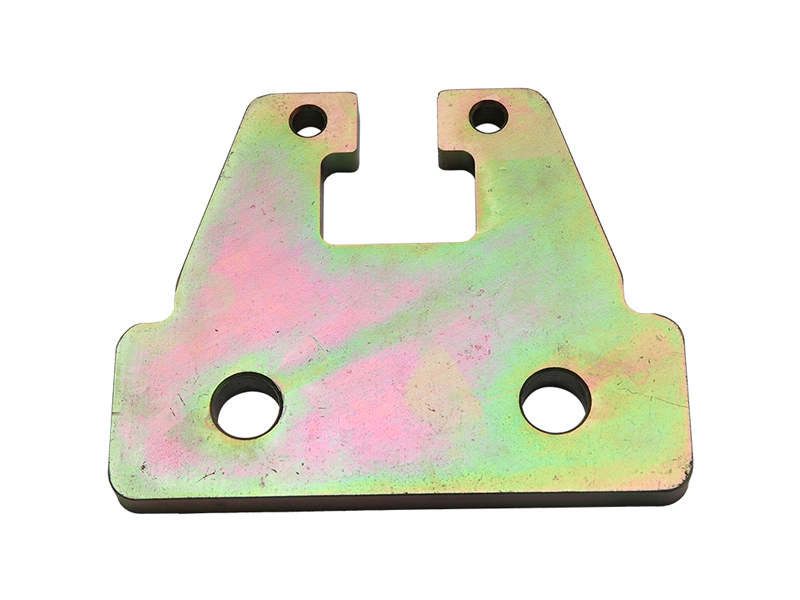The Medical Device Business Journal — Medical Device News & Articles | MassDevice
In the world of medical device manufacturing, precision is paramount. From general surgical instruments to complex endoscopic stapling devices and robotic surgical systems, the quality and accuracy of the components they are comprised of directly impacts performance, safety, and most importantly, the patient. One manufacturing technique that continues to play a crucial role in meeting the stringent demands of the medical device industry is metal stamping. Strut Car Part

Metal stamping is an indispensable manufacturing process for efficiently producing high-volume, high-precision, and challenging components. Its ability to achieve exceptional precision, repeatability, and consistency is critical for the medical industry. Employing advanced press technology with state-of-the-art progressive die tooling and innovative tooling design, medical device manufacturers have come to rely on metal stamping as an innovative and reliable solution when compared to other manufacturing methods.
Let’s explore the significance of metal stamping for high-volume, high-precision, and challenging medical parts and components.
The Role of Metal Stamping in Medical Manufacturing
Metal stamping is a versatile and efficient manufacturing process used to produce complex, high-precision parts from flat steel. It involves transforming the metal through a series of progressive operations in a stamping press. As the press cycles up and down, flat steel strip progresses through the tool; each station performs a different operation on the part. As the parts progress through all stations in the tool, it yields a part with each cycle. The process is ideal for producing high volumes of parts quickly and consistently. In the medical industry, metal stamping plays a pivotal role in the production of a wide range of components.
Complex Geometries and Valuable DFM
Many medical components have challenging features and tight tolerances. Metal stamping is often capable of producing such complex geometries. Working with a metal stamper who has the depth and experience to know what is or is not possible with metal stamping is key. Every technology has limitations; knowing and applying that knowledge to a specific part design is invaluable. One of the most important first steps—during the design phase—is to consider a part’s stamping potential. It is a best practice to engage with the metal stamper at the earliest stage to discuss the most critical characteristics to a part’s purpose and function. Designing a part that can be made in a progressive tool is the most desirable from a cost perspective.
Initial Tooling Costs: When it comes to metal stamping, one of the primary cost factors is the tooling required for the process. Tooling refers to the design and build of a progressive stamping tool. Tooling costs typically increase commensurately with the complexity of the part in question. Initial tooling costs can be relatively high and include design, engineering, and construction of the tool. However, these costs are a one-time investment; properly constructed Class-A tooling will typically last for the life of the project, and beyond.
Efficiency in High-Volume Production: The stamping process can churn out parts at a remarkable rate; long runs yield a larger volume of parts from one press run. Scalability in metal stamping means that as production requirements increase, the process can easily accommodate the higher volumes without a proportional increase in cost—gains that are reflected in the per unit price.
Consistency and Quality Control: The ability to maintain precision and consistency in high-volume production is a key advantage of metal stamping. A strong quality management system (QMS) and scheduled tool maintenance at regular intervals ensure that each component produced meets the same stringent quality standards, the last as good as the first. ISO 9001:2015 and ISO 13485 certifications are robust standards for the manufacture of medical device components.
While the upfront tooling costs in metal stamping may be a consideration, the long-term cost-efficiency and scalability advantages are undeniable. Medical device manufacturers can benefit from these advantages by choosing metal stamping for high-volume production, ultimately leading to cost savings, consistent quality, and the ability to meet the stringent demands of the medical industry efficiently and reliably.
As discussed here, there are many considerations for choosing metal stamping over CNC machining for complex geometries and challenging features in medical devices when the project involves high-volume production, necessitates cost-efficiency, and requires strict consistency and repeatability. In cases where a component cannot be fully realized through the stamping process alone, CNC machining, laser cut features, and other secondary operations can be performed to bring the part to fruition. The key is engagement, understanding, and above all, a partner who has the depth and expertise to deliver the part complete in the most efficient and cost-effective manner possible.
A team that brings a 360-degree perspective from all disciplines involved in the inception, design, and production phases of manufacturing is stronger, more nimble, adaptive, and effective. We work closely with you to provide exactly that. Our pedigree is in metal stamping, and from our humble beginnings, Hobson & Motzer has grown to excel with products that require more than a single operation or products that require multiple manufacturing processes, ensuring accountability and continuity in our protocols and the highest quality, precision, and repeatability in customers’ parts and components. Legacy knowledge, a deeply collaborative approach—internally and with customers—along with our vertically integrated secondary operations, give customers access to a complete suite of services and capabilities, exceptional support, and over 100 years of manufacturing expertise. We are happy to talk with you and explore exactly which production approach best suits your next project.
If you are interested in a successful collaboration for your next precision manufacturing need, contact Hobson & Motzer now. We’d love to discuss how we can help.
Sponsored content by Hobson & Motzer
Filed Under: Sponsored Content Tagged With: Hobson Motzer

Suspension System Parts Copyright © 2024 · WTWH Media LLC and its licensors. All rights reserved. The material on this site may not be reproduced, distributed, transmitted, cached or otherwise used, except with the prior written permission of WTWH Media.